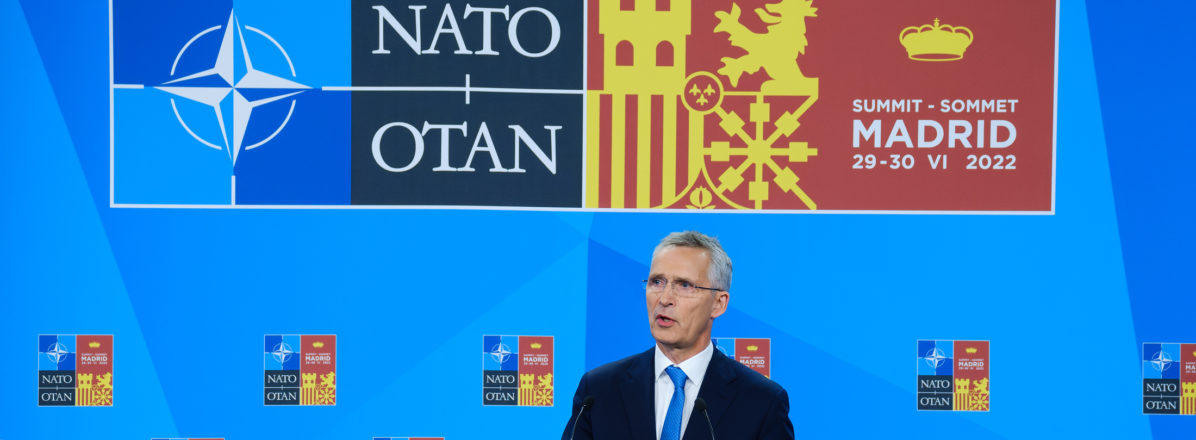A nation must think before it acts.
A confluence of factors raising its significance, expectations were high for NATO’s 2022 summit in Madrid held June 28-30. A new strategic concept was to be adopted. Russia’s assault on Ukraine had transformed the geopolitical situation; even German Chancellor Olaf Scholz had announced a Zeitenwende, a major u-turn in German defense and foreign policy. As a result of the war, the Baltic states renewed their calls for an increased military presence on the eastern flank. How has Baltic defense changed in the wake of the Madrid Summit?
In the lead-up to the summit, Baltic entreaties were forceful and their expectations were high. The case was clear and eminently reasonable; as Estonian Prime Minister Kaja Kallas argued, under existing plans and readiness levels NATO was unable actually to defend the Baltic states were Russia to attack as forcefully as it attacked Ukraine. The result would be more Russian atrocities and, at best, NATO’s liberation of ruined nations. She hoped for NATO to provide one full brigade to each of the three Baltic states, later to be further enlarged to two. The other, and from a Western perspective, much more obvious expectation concerned the accession of Finland and Sweden to NATO.
As expected, progress was made on Finnish and Swedish accession to NATO as Turkish President Recep Tayyip Erdoğan agreed to support their membership. Since then, member-state legislatures have been ratifying the application and accession, although Turkey has again proved nettlesome. Once this process is complete, the geostrategic character of the Baltic Sea will be transformed; already a European Union lake, it would become a NATO lake as well. With appropriate force deployment, particularly of anti-ship weaponry, NATO should be able to deny its use to Russia in any conflict.
NATO has also committed to fulfilling Baltic expectations on reinforcements; the existing battalion-sized enhanced forward presence battlegroups will each be expanded to brigade-size. This aligns with Kallas’ envisioned first step. Any military expansion is welcome as it improves the chances that NATO’s deterrence by reinforcement posture will work—the idea that Russia would not be able to overrun the Baltic states before reinforcements arrive, and so chooses to be deterred. In this vein, Britain pledged to expand its presence in Estonia by an extra 1,000 troops. This expansion fits with a renewed pattern of eastern flank reinforcement caused by Russia’s newest aggression. Already in April Denmark had begun reinforcing the multinational battlegroup in Latvia. The United States also shifted various forces around, including deploying attack aviation to Lithuania and an airborne infantry battalion to Latvia. Although much work remains to be done to reinforce the battlegroups to brigade size, a reinforcing momentum exists from the political impact of Russia’s war itself, independent of, but congruent with, the aims enunciated at Madrid.
Alongside direct military reinforcement within the Baltic states themselves, NATO also plans to base reinforcements nearby that credibly may respond quickly. For example, even before Madrid, Germany’s pledge to reinforce the Baltic states turned out to be of this particular character. Although better than nothing, this model is politically and militarily problematic. First, it obviously demonstrates weaker political commitment than an actual deployment on location and so is less likely to persuade Russia to be deterred. This especially pertains in a crisis situation, as the German instinct thus far in all crises with Russia (up to and including the early days of its war against Ukraine) is to show restraint so as not to “escalate” the situation. If this pattern were hypothetically to continue in a Baltic crisis, any value a ready brigade in Germany might have for deterrence is negated because Germany would lack the political will to actually deploy it, let alone actively employ it. Moreover, militarily, it is much more difficult to move forces into the Baltic to defend it after hostilities have broken out rather than before; much has been made over the past eight years of exactly how difficult a theater the Baltic states would be to reinforce and sustain. A ready brigade in Germany would still face this problem, even if it already had pre-positioned equipment in Lithuania. The military and political credibility of such a brigade is doubtful.
Beyond the summit, vicariously experiencing the war in Ukraine has also had an unavoidable immediate impact on Baltic defense policies, particularly procurement. Estonia acted first, aiming to buy up to six High Mobility Artillery Rocket Systems (HIMARS), which have excellently served the Ukrainians against Russian logistics, command points, and other high value targets. Latvia also plans to buy HIMARS. Its other two highest priority procurements are anti-ship weaponry and medium-range air defense, the latter as a joint purchase with Estonia. On 27 July, Lithuania also announced plans for a HIMARS purchase.
Yet the biggest Baltic defense news is that Latvia is planning to reintroduce conscription from 2023, initially on a voluntary basis. In 2023 the plan calls for 1,000 conscripts, ideally to increase each year by 2,000 until 7,000 will be called up annually. This will increase to 50,000 the share of the population available and ready, should the need arise, to defend the country actively in combat, of whom 14,000 would be active service, 16,000 national guard, and 20,000 reservists. It is unclear why this policy is now being changed, as Latvia has consistently resisted reinstating conscription even after 2014 — plausible explanations may individually or collectively include the war, pressure from the other two Baltic states, or as part of the behind the scenes diplomacy leading up to Madrid.
Ultimately, the Madrid Summit produced no real surprises for Baltic defense: progress for Sweden and Finland, and limited but desired reinforcements for the Baltic states. However, the war has reinvigorated attention to and thinking about Baltic defense. Despite some residual Western (especially Western European) complacency, it remains imprudent simply to assume that Russia will remain quiescent in the Baltic. It did not do so with Ukraine, nonetheless Russia has certainly stubbed its “great power” toe on Ukraine, and afforded NATO some time to reinforce its border with Russia and improve military readiness while Russia reconstitutes its army — current estimates vary from a pessimistic two years to an optimistic two decades. And the war is not yet finished.
Explore more from FPRI’s Baltic Initiative
The views expressed in this article are those of the author alone and do not necessarily reflect the position of the Foreign Policy Research Institute, a non-partisan organization that seeks to publish well-argued, policy-oriented articles on American foreign policy and national security priorities.




